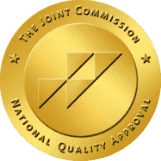What Conditions Can Neurofeedback Help
What Conditions Can Neurofeedback Help
What Conditions Can Neurofeedback Help
Learn more in this article about the benefits of EEG neurofeedback.

Article Contents
Overview of EEG Neurofeedback
EEG neurofeedback therapy is a non-invasive treatment used to help individuals with ADHD, anxiety, and depression. Researchers are still exploring the full potential of neurofeedback, but current evidence suggests that it can be an effective treatment for various issues. This post will explore some of the conditions for which neurofeedback is effective. We’ll also look at what happens during a session and how you might decide if neurofeedback is right for you. An electroencephalograph (EEG) is a device used to measure electrical waves in the human brain. Scientists and clinicians can analyze the data from an EEG to identify documented brain wave patterns. EEG biofeedback, also known as neurofeedback, is an intervention used to treat various conditions. EEG neurofeedback can be used to train the brain and increase arousal levels.1What Is EEG Neurofeedback?
EEG neurofeedback involves placing electrodes on an individual’s scalp to monitor brain activity. Typically, during an EEG neurofeedback session, the individual is watching a movie or playing a video game. The individual is given feedback with visual or audio cues, such as a beep or change in the video game. EEG neurofeedback teaches individuals how to increase their arousal levels and reduce impulsive or hyperactive behavior.1What Does Neurofeedback Do to the Brain?
Multiple conditions can be treated using EEG neurofeedback. This type of therapy teaches the human brain to self-regulate healthily and productively.1Success Rates of Neurofeedback
The success rates of EEG neurofeedback can depend on numerous variables such as electrode placement, frequency of sessions, and length of treatment. Depending on treatment variables, the individual, and the type of condition, the success rates of EEG neurofeedback can differ. In many cases, EEG neurofeedback is a highly successful intervention.2What Conditions Can Neurofeedback Help?
EEG biofeedback can help with many conditions, including epilepsy, ADD/ADHD, depression, anxiety, PTSD, substance abuse, learning disabilities, insomnia, and pain management.3 The following sections will explore how EEG biofeedback can intervene in these conditions.Attention Deficit/Hyperactivity Disorder (ADHD)
EEG biofeedback is a valuable tool in the long-term maintenance of ADHD and attention deficit disorder (ADD) symptoms. A growing number of people are looking into EEG biofeedback as an alternative or complementary treatment to pharmacological treatments.4Anxiety
Generalized anxiety disorder or GAD is one of the most common mental health disorders. For individuals struggling with this sometimes debilitating condition, EEG therapy can be a helpful tool. EEG therapy can benefit individuals who aren’t successful with traditional pharmacotherapy or psychotherapy.5Depression
Major depressive disorder or MDD is another common mental health disorder in the United States. EEG therapy is a non-invasive treatment technique that has been shown to help individuals with their depression and mental health symptoms.5Drug Addiction
EEG-based neurofeedback has provided psychological improvement for patients with drug and alcohol addiction. Research shows neurofeedback as an effective treatment modality for substance abuse, including opiate use disorders.6Schizophrenia
For patients with schizophrenia, EEG-based neurofeedback has the potential to relieve auditory and verbal hallucinations. Researchers believe EEG based neurofeedback is a promising treatment for schizophrenia.7Insomnia
According to the International Society for Neuroregulation and Research (ISNR), ongoing research is needed to determine how effective EEG-based neurofeedback is for insomnia.8Learning Disabilities
As previously mentioned, neurofeedback is an effective therapy for learning disabilities, including ADD and ADHD.Epilepsy
Studies have shown that the self-regulation method of neurofeedback is a valuable intervention for epilepsy.8Pain Management
According to current research, neurotherapy is a promising intervention that requires further study before being identified as an effective intervention for pain disorders.8Other Conditions
In addition to the previously named conditions, neurotherapy has been shown to help individuals diagnosed with post-traumatic stress disorder (PTSD).Getting Started with EEG Neurofeedback
 If you’re considering getting started with neurofeedback therapy, you may be wondering where to go for treatment, how EEG neurofeedback systems are used, and whether the results will last. Read on for the answers to all these questions.
If you’re considering getting started with neurofeedback therapy, you may be wondering where to go for treatment, how EEG neurofeedback systems are used, and whether the results will last. Read on for the answers to all these questions.
Who Provides EEG Neurofeedback?
In Los Angeles, California, Iris Healing® is the leading EEG neurofeedback therapy provider. Iris Healing® utilizes EEG neurofeedback training, transcranial magnetic stimulation (TMS), and psychotherapy to treat mental health, addiction, and co-occurring disorders.How Do Psychiatrists Use EEG Neurofeedback?
Psychiatrists identify the individual’s optimal brainwave settings during neurofeedback therapy and begin treatment. Feedback alters what the individual sees on their television screen or game. The human brain adjusts to positive outcomes and begins to self-regulate better.Does Neurofeedback Involve Any Medications?
EEG biofeedback training doesn’t involve medications. Neurofeedback doesn’t replace medications or psychotherapy. Instead, neurofeedback complements these interventions.Will The Results of Neurofeedback Last?
The results of EEG treatment and repeated exposure can provide long-lasting changes in the human brain.9How Can I Find a Neurofeedback Institute Near Me?
If you’re looking for EEG neurofeedback for ADHD or other conditions, the International Society for Neuroregulation and Research offers a convenient provider search. Individuals looking to find a knowledgeable neurofeedback therapist in the Los Angeles area can contact Iris Healing® to begin their journey towards recovery today.What Are the Side Effects of Neurofeedback?
Neurofeedback therapy doesn’t typically result in adverse side effects when administered by a trained professional.Is Neurofeedback Safe?
Neurofeedback treatment is considered a safe treatment approach for mental health and substance use disorders.Common Side Effects
If an individual does experience side effects after visiting an EEG institute, they should contact their clinician or administrator to discuss their treatment plan going forward. People have experienced emotional instability, muscle twitches, tics, and somatic symptoms in rare cases after participating in neurofeedback.10The Future of EEG Neurofeedback
According to the National Alliance on Mental Illness (NAMI), EEG neurofeedback is a promising therapeutic approach for many conditions.Future Directions
Future research and clinical trials will focus on increasing the availability of randomized controlled clinical trials. This will provide further information about the potential of neurofeedback for therapeutic intervention.
Get EEG Treatment at Iris Healing®
Holistic healing, long-lasting mental health recovery, and freedom from addiction are available at Iris Healing® in Woodland Hills, California. EEG neurofeedback treatment is one of the many therapeutic modalities practiced at Iris Healing®. For more information or to get started, contact our friendly admissions team today!
Find Help Now
Since we have experienced the emotional, mental, and physical effects of addiction firsthand, we are aware of them. Check your insurance or give us a call right away if you or a loved one is having trouble.
Resources
- https://chadd.org/about-adhd/neurofeedback-eeg-biofeedback/
- https://www.ncbi.nlm.nih.gov/pmc/articles/PMC4892319/
- https://www.nami.org/Blogs/NAMI-Blog/August-2021/Neurofeedback-A-Complement-to-Talk-Therapy-and-Medication?gclid=Cj0KCQiA3-yQBhD3ARIsAHuHT67G6ilubQcUsy4tqMN9pMMrXIXTQSl_PKCSF0BqgFrkd01yKnj04woaAjBwEALw_wcB
- https://www.ncbi.nlm.nih.gov/pmc/articles/PMC6538574/
- https://www.ncbi.nlm.nih.gov/books/NBK531603/
- https://www.ncbi.nlm.nih.gov/pmc/articles/PMC3650238/
- https://www.ncbi.nlm.nih.gov/pmc/articles/PMC3406539/
- https://isnr.org/what-is-neurofeedback
- https://sitn.hms.harvard.edu/flash/2017/brain-training-future-psychiatric-treatment/
- https://www.researchgate.net/publication/233167031_Adverse_reactions_and_potential_iatrogenic_effects_in_neurofeedback_training




